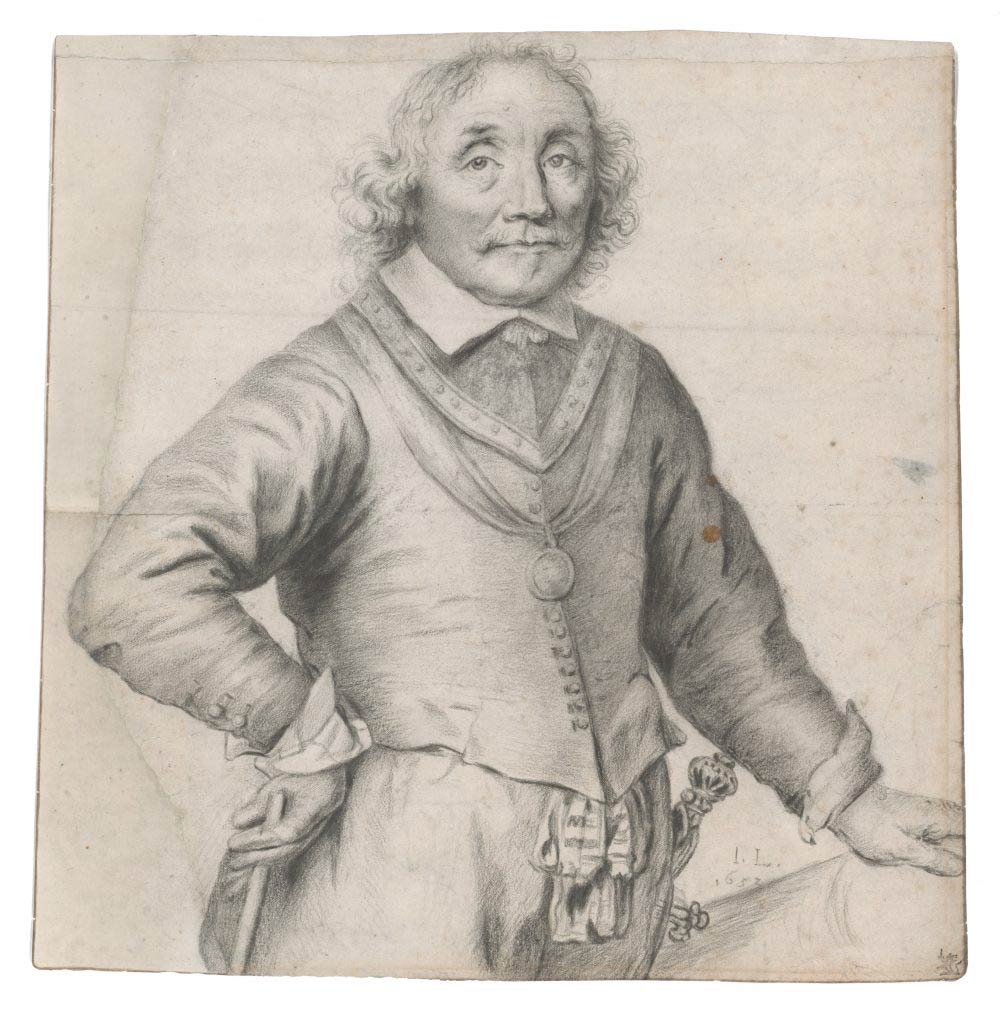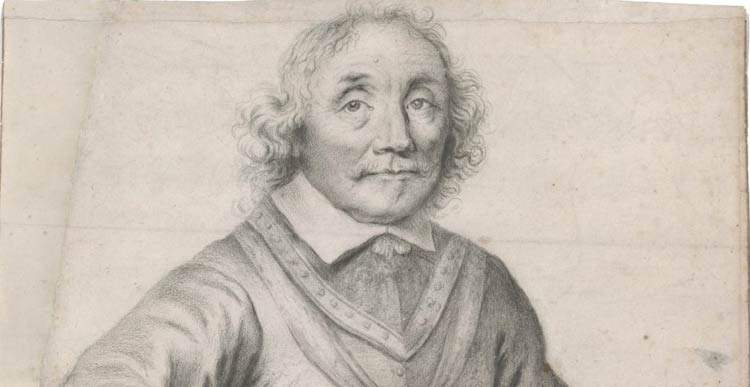It had gone to auction in October 2020 with a ridiculous estimate: between $200 and $300. And with attribution to an unknown artist, although the sheet was initialed (“I.L.”) and dated 1652. It turned out that it was instead a key drawing by Jan Lievens (Leiden, 1607 - Amsterdam, 1674), depicting Dutch admiral Maarten Harpertszoon Tromp (1597 - 1653), who died in battle during the Anglo-Dutch War of 1653. The drawing turned out to be the basis for several engravings depicting Tromp, as well as two paintings, one of which is preserved in the Rijksmuseum in Amsterdam. Fortunately for the auction house, the small Marion Antique Au ctions based in the small town of Marion, Massachusetts, experts quickly understood the quality of the sheet, around which a rather hard-fought tussle ensued, ending with an award at $440,000.
Buying the work was New York-based dealer Christopher Bishop, who is now taking the drawing to TEFAF in Maastricht, one of the world’s most important ancient art fairs, where it will be on sale for 1.35 million euros. It is Bishop himself who told the New York Times how things came about: while he was as usual sifting through online auction catalogs in search of interesting works, he lingered on the image of the drawing for sale at Marion Antique. Catching his attention was precisely the monogram “I.L.” “Why couldn’t it have been Jan Lievens?”: this was the question Bishop asked himself. With some online research he found the print and immediately thought that the work for sale in Massachusetts might be the sheet from which the engraving was derived.So he went to Marion where he was able to appreciate the work in person and was told the recent history of that sheet by Frank McNamee, co-owner of the small auction house.

The drawing was in the possession of a family that had acquired it through inheritance (some member must have purchased it in Europe at some unspecified time in the 20th century) and was looking to auction off a number of hand-painted porcelains. McNamee had therefore been to their home to appraise the works, and he was also invited to see a room full of framed prints. He was intrigued by the drawing, “I thought it was a Rembrandt forgery,” he told the New York Times. As soon as it was posted online, the paper immediately attracted attention: at least fifteen potential buyers phoned the auction house before the sale, and in the end there were nearly twenty bidders, as many had had Bishop’s hunch. That is, all were convinced that that paper might be the Lievens long thought to be lost. The struggle to win the piece surprised even the auctioneer, Dave Glynn (as soon as the auction reached two hundred thousand dollars, or a thousand times the initial estimate, he said, “It looks like we underestimated this one!”). After the three hundred thousand dollars, only two contenders remained, but in the end Bishop came out on top for the sum of $440,000 ($514,800 counting royalties).
The drawing was then taken to New York, where it was restored as its condition was not good. The restoration uncovered the watermark on the paper, which made it clear that the sheet came from a regular supplier to Lievens and Rembrandt, active in 1950s Amsterdam. Perforation marks were then found at the points where the drawing was attached to the plate from which the engraving was made, and then more folds and even ink stains. The sheet was of course also examined by other experts, including Gregory Rubinstein, head of drawings at Sotheby’s in London, who expressed no doubts about the work’s authenticity. And who also indulged in a professional comment: although he said he did not blame a small auction house for not understanding the value of a work, he also said that if such a mistake had happened to him, he would have lost his job, since experts are unlikely to have doubts about the value of the paper.
Luckily for the auction house, then, the experts noticed it before a bargain sale. And now Bishop’s hope is that it will be purchased by some Dutch museum, since it is also a very important work for the country’s history.
 |
| At auction with an estimate of $200, it turns out to be a fundamental design worth $1 million |
Warning: the translation into English of the original Italian article was created using automatic tools. We undertake to review all articles, but we do not guarantee the total absence of inaccuracies in the translation due to the program. You can find the original by clicking on the ITA button. If you find any mistake,please contact us.